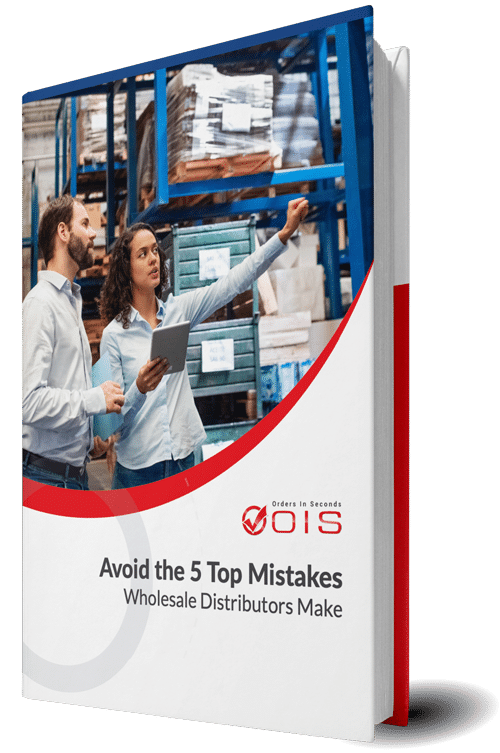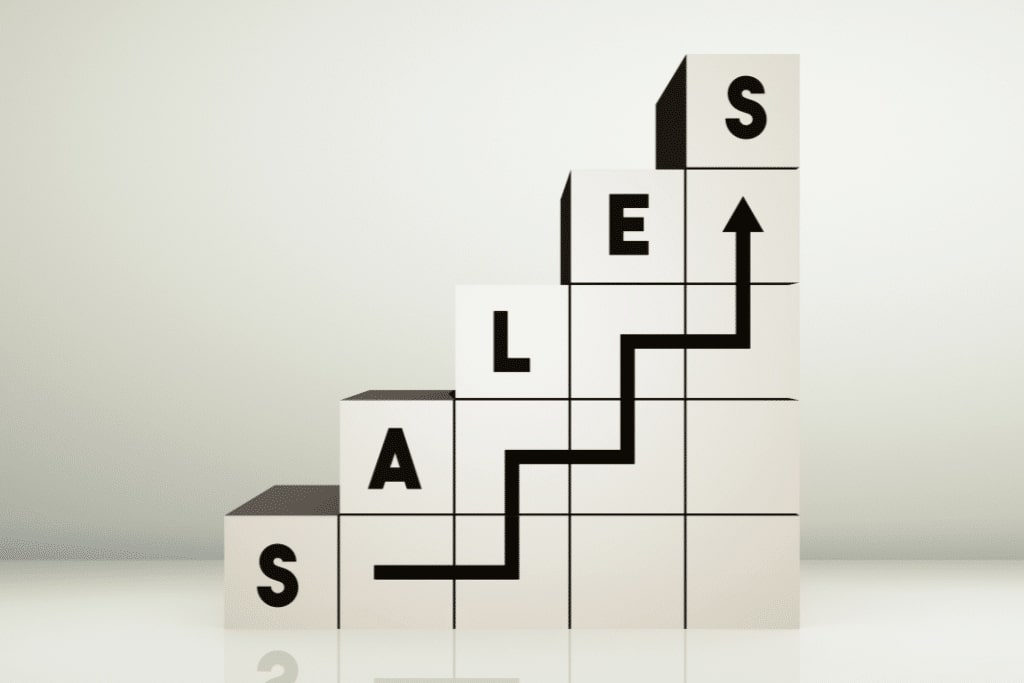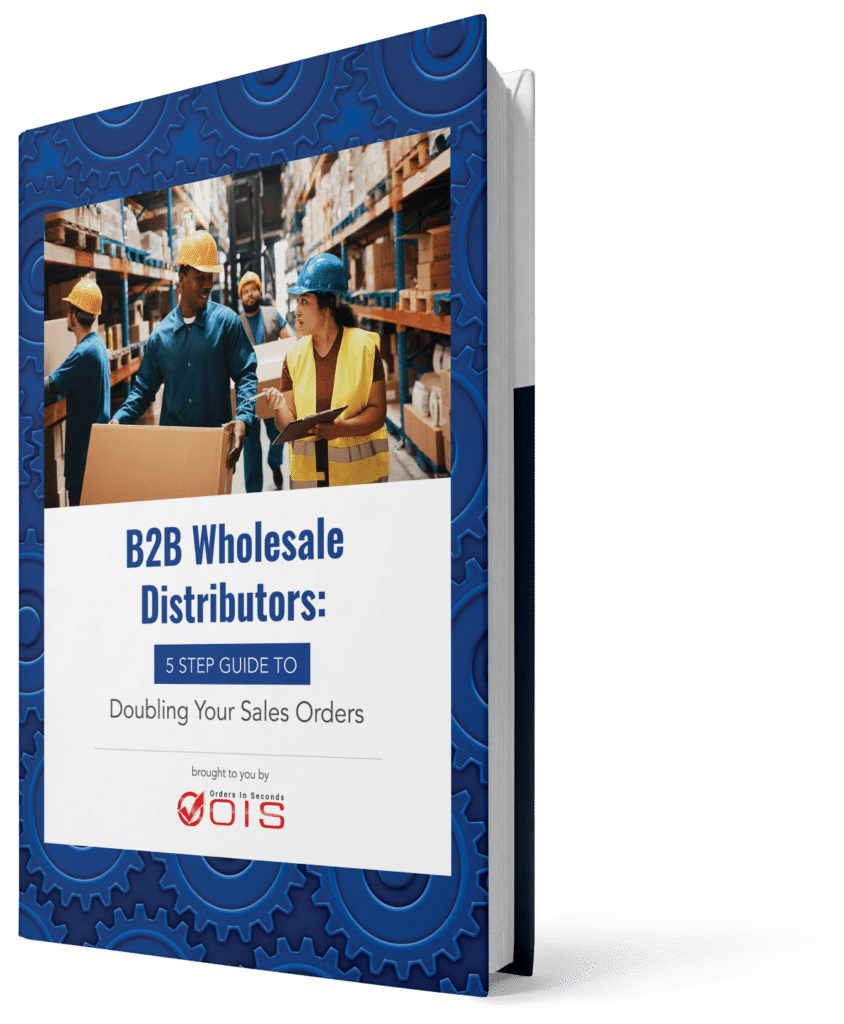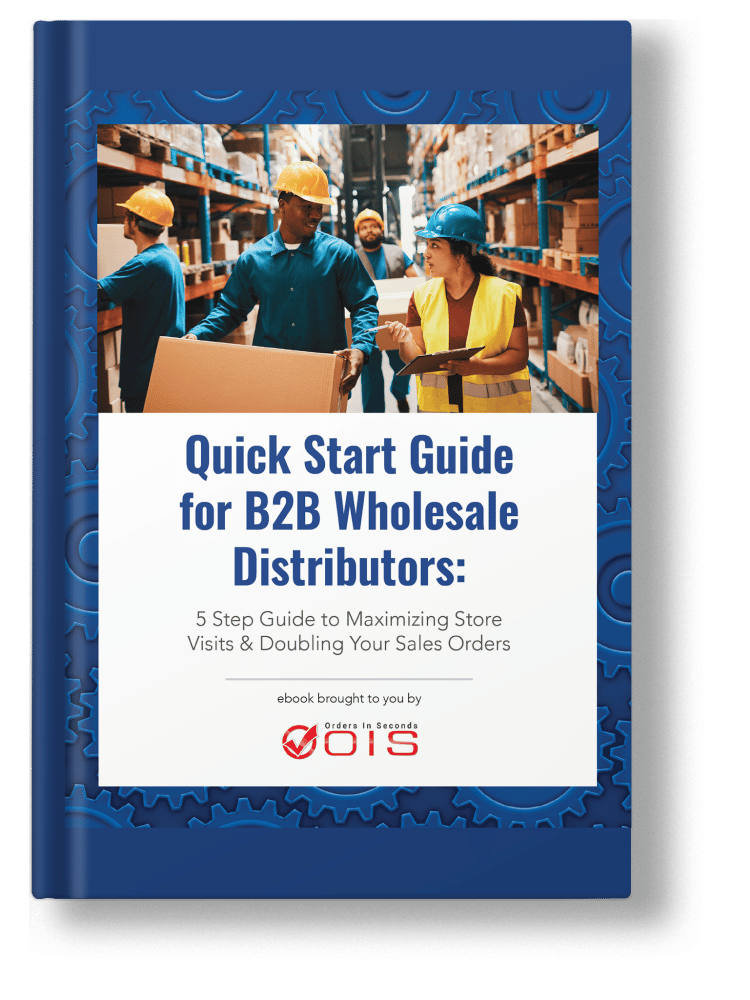Curious about inside sales vs outside sales? This article breaks down the differences between remote selling and face-to-face engagement. By understanding both approaches, you can decide which suits your business best.
Inside Sales vs. Outside Sales
Inside sales and outside sales are two distinct approaches to driving revenue, each with unique strengths. Inside sales focuses on remote interactions, leveraging phone calls, emails, and video conferencing to connect with clients. This method is cost-effective, scalable, and ideal for businesses targeting a broad, geographically diverse audience. Outside sales, on the other hand, thrives on face-to-face meetings, building personal relationships through in-person visits, events, or demos.
It’s often suited for high-value deals or industries where trust and hands-on engagement are critical. Choosing between the two depends on your product, market, and customer preferences—many successful teams blend both for maximum impact.
Key Takeaways
- Inside sales leverages remote communication and technology to engage with clients, while outside sales focuses on face-to-face interactions and relationship building.
- Both inside and outside sales roles are essential, with inside sales reps primarily generating leads and nurturing them, while outside reps focus on closing deals through personal engagement.
- Adopting a hybrid sales strategy that combines inside and outside sales can effectively optimize business growth by leveraging the strengths of both approaches.
Table of Contents
- Defining Inside Sales and Outside Sales
- Key Differences Between Inside and Outside Sales
- Roles and Responsibilities of Sales Reps
- Impact on Business Strategy
- Skill Sets for Sales Professionals
- Tools and Technologies Used
- Measuring Performance
- Choosing the Right Sales Strategy
- Case Studies: Real-World Examples
- Summary
- Frequently Asked Questions
- Elevate Inside and Outside Sales with Orders in Seconds
Defining Inside Sales and Outside Sales

Inside and outside sales represent two distinct methodologies in the sales landscape. Inside sales refers to selling remotely, using telecommunication and digital channels to engage with potential customers. In contrast, outside sales involve face-to-face interactions, meeting clients in person, and often traveling to build relationships and close deals.
These approaches cater to different segments of the sales cycle and customer engagement strategies. Aligning inside and outside sales teams can transform leads into valuable sales opportunities, providing a comprehensive approach to meeting diverse customer needs.
What is Inside Sales?
Inside sales, also known as remote sales, virtual sales, or social selling, involves selling products or services through phone, email, and online communication channels rather than in-person meetings. This method is particularly prevalent in B2B industries like tech and SaaS, where sales reps can efficiently manage a high volume of sales activities.
Inside sales reps use various digital tools to generate leads and nurture relationships, such as virtual meetings, social selling, and live chat support. They mainly engage with prospects through phone, email, and video chat, building a robust sales pipeline without extensive travel. This method allows for a predictable work schedule and the ability to handle higher volumes of sales activities.
What is Outside Sales?
Outside sales, on the other hand, involves traditional sales activities that rely heavily on face-to-face interactions with clients. This model focuses on personal engagement, building strong customer relationships through direct meetings and demonstrations. Outside sales reps or field sales reps often travel to meet potential clients, tailoring their pitches to fit individual needs and showcasing products or services in person.
This approach works well for complex products and services that need detailed explanations and demonstrations. Salespeople focus on meeting prospects at their place of business or other convenient locations, providing tailored solutions and fostering trust through personal interaction in the sales process. This method can lead to higher customer loyalty and more significant revenue generation.
Key Differences Between Inside and Outside Sales
Inside sales and outside sales are two distinct approaches to sales, each with its own unique characteristics, advantages, and challenges. Understanding the key differences between these two approaches is crucial for businesses to determine which strategy best suits their needs.
Roles and Responsibilities of Sales Reps

The roles and responsibilities of sales reps in inside and outside sales are distinct yet complementary. Inside sales teams are primarily focused on generating leads and nurturing them until they are ready for closure or handed over to outside sales. Outside sales reps, in contrast, travel to meet clients in person, building strong relationships and closing deals through direct interaction.
Both roles require specific skills and approaches to succeed. Recognizing these differences is key to optimizing your sales strategy and ensuring each team operates effectively within its domain.
Inside Sales Reps
Inside sales reps are responsible for top-of-funnel prospecting, converting leads into sales opportunities through remote communication channels. Common roles within inside sales include Sales Development Representatives (SDRs) and Business Development Representatives (BDRs), who focus on qualifying leads and setting appointments.
SDR and BDR use tools like phones, email, and video conferencing platforms to engage with prospects and customers. Their performance is often measured by the volume of outgoing calls and emails, as well as their ability to qualify leads and move them through the sales pipeline efficiently.Outside Sales Reps
Outside sales reps, on the other hand, spend significant time traveling to meet clients and build relationships. Their primary goal is to turn sales opportunities into new clients through face-to-face interactions, whether in formal meetings or more casual settings like client dinners or golf outings.
Effective outside sales reps excel in building relationships, identifying customer needs, and closing deals through personalized pitches and demonstrations. They use mobile tools and GPS navigation to optimize travel routes and access client information on the go.
Impact on Business Strategy
Adopting the right sales strategy, whether inside or outside sales, can significantly impact your business’s overall strategy and efficiency. Inside sales tend to be more cost-effective due to lower travel and logistical expenses, making it an attractive option for companies with budget constraints. Outside sales, while more resource-intensive, can lead to higher customer loyalty and revenue through personal engagement.
Balancing these approaches based on your product complexity, market, and customer preferences can optimize your sales performance and business growth. Businesses must weigh the benefits of each model to align with their strategic goals.
Cost Efficiency
Inside sales generally incur fewer ongoing costs, allowing companies to allocate resources to other critical areas. One company increased its revenue by outsourcing inside sales, generating $27 million in new business opportunities within a year due to lower overhead costs. HubSpot’s inside sales team, which grew to 110 members, contributed to a revenue growth of over 6,000% in four years by leveraging data-driven strategies.
The financial advantages of inside sales stem from minimized travel and logistical expenses, allowing for more efficient resource management and higher ROI.
Reach and Scalability
Inside sales can reach a nearly limitless audience with minimal geographic restrictions, enabling engagement with numerous leads across various locations. This ability enables inside sales reps to engage with warm leads who have shown interest in products or services, maximizing conversion potential.
In contrast, outside salespeople often favor leads that are geographically closer due to the need for in-person visits. Companies that prioritize outside sales often see increased customer loyalty and higher revenue through face-to-face interactions, making it valuable for building long-term relationships.

Sales professionals require a blend of hard and soft skills to thrive in both inside and outside sales roles. While some skills are universal, others are more specific to the sales model being utilized. Inside sales reps should master remote communication and technology, while outside sales reps must excel in personal interactions and adaptability.
Understanding and developing these skills can greatly enhance the effectiveness of your sales team, whether they are working remotely or in the field.
Skills for Inside Sales Reps
Inside sales reps must be proficient in remote communication, fast typing, and conveying emotions effectively through digital channels. They need to be driven, resilient, and skilled in using technology, such as auto-dialing tools and email tracking software, to enhance call efficiency and gain insights into prospect engagement.
A tech firm reported a 30% increase in sales within a year by adopting a fully remote inside sales approach, leveraging digital communication tools to engage clients.
Skills for Outside Sales Reps
Outside sales reps need strong presentation abilities, good listening skills, and an understanding of body language to interact effectively with clients. They must also be skilled in negotiation, adaptability, and effective time management to respond to various customer environments and close deals successfully as a sales rep.
These skills are crucial for building trust and establishing long-term customer relationships through face-to-face interactions.
Tools and Technologies Used

Sales teams rely heavily on tools and technologies to streamline their processes and enhance productivity. CRM software, digital communication tools, and AI automation are essential for managing customer relationships and ensuring efficient sales operations. These tools not only help in tracking and managing sales activities but also provide valuable insights that can inform and improve sales strategies.
CRM Software
CRM software is a cornerstone for both inside and outside sales teams, boosting productivity and providing visibility of the sales pipeline. CRM systems offer contact and deal management, activity tracking, and task automation, making them crucial for monitoring leads and tracking customer interactions.
A U.S.-based virtual sales team helped a firm earn $22.5 million by effectively managing customer interactions through CRM tools.
Communication Tools
Digital communication tools like Zoom, Slack, and messaging apps are essential for both inside and outside sales, allowing teams to connect and engage with clients remotely. These tools enhance global reach, enabling inside sales teams to engage with prospects across various time zones.
Outside sales reps also utilize these tools for video conferencing and online chat platforms, adapting to the digital age while maintaining personal connections.
AI and Automation
AI and automation tools significantly enhance efficiency in lead generation, follow-ups, and customer engagement for both sales models. AI chatbots, for instance, can serve customers by offering self-service options or connecting them to sales representatives, improving response times and customer satisfaction.
Advanced AI chatbots understand intent and sentiment, routing customers effectively and displaying conversation history to streamline interactions.
Measuring Performance
Measuring sales performance is crucial for understanding the effectiveness of your sales strategies and making data-driven decisions. Key metrics and performance tracking tools help evaluate how well sales teams are converting leads into clients and generating revenue.
Regularly monitoring these metrics can guide businesses in refining their sales strategies and improving overall performance.
Key Metrics
Quota attainment is a straightforward metric that indicates whether sales representatives meet their sales targets during a specified timeframe. Other important metrics include win rate, lead response time, and the call to connect ratio, which help assess overall sales effectiveness.
Understanding these metrics can guide businesses in refining their sales strategies and improving overall performance.

Avoid the Top 5 Mistakes Wholesale Distributors Make
Are you making one of the top 5 mistakes that plague wholesale distributors? Download our free eBook to find out. We’ve also included tips and guidance to help you save time and avoid costly mistakes.
Performance Tracking Tools
CRM systems are essential for managing customer interactions and tracking sales team performance in real-time. Sales analytics platforms provide insights into sales trends and team productivity, enabling data-driven decision-making.
Using both CRM systems and analytics platforms together enhances the ability to monitor and improve sales performance.
Choosing the Right Sales Strategy

Choosing the right sales strategy involves evaluating your business needs and understanding the strengths of both inside and outside sales. Successful companies often utilize a mix of inside and outside sales strategies to enhance market reach and customer engagement. This blended approach allows businesses to optimize their sales processes and build strong customer relationships.
By integrating both sales models, companies can ensure that their sales teams work towards the same goal, qualifying opportunities effectively and collaborating in real-time. Visibility and transparency are critical for effective alignment in sales teams, ensuring that all efforts are directed towards achieving the business’s sales goals. For businesses operating in the SaaS industry, understanding and implementing the right sales methodologies for SaaS can further enhance the effectiveness of inside and outside sales strategies, helping sales teams address unique challenges like subscription-based models and long-term customer retention.Evaluating Business Needs
When evaluating business needs for sales strategies, consider factors such as product type, budget, and target audience. Understanding your target audience and budget is essential for determining the most effective sales approach.
For more expensive or complex products, outside sales strategies are preferable due to the need for personal engagement and relationship building. Conversely, for cheaper solutions, inside sales tactics are more appropriate as they can achieve high volumes at lower costs.
Hybrid Sales Models
A hybrid sales model combines inside and outside sales methods, leveraging the strengths of both approaches. This flexibility allows companies to develop tailored sales strategies based on product needs and customer preferences. Research suggests that a combination of inside and outside sellers can enhance effectiveness.
The hybrid approach also offers scalability, reducing travel costs by using virtual meetings for initial discussions. Sales development representatives (SDRs) play a crucial role in this model, handling initial contacts and booking meetings.
The trend towards hybrid strategies is reflected in the B2B sales landscape, where 94% of decision-makers prefer omnichannel sales.
Case Studies: Real-World Examples
Real-world examples provide valuable insights into the effectiveness of inside and outside sales strategies. Companies have achieved significant growth by implementing structured sales techniques and leveraging the strengths of both models.
These practical examples illuminate the tangible applications of both inside and outside sales tactics, providing actionable insights that can be adapted to optimize your own sales endeavors.
To further refine your sales strategies and identify potential avenues for growth, having access to a comprehensive list of retail stores can be a powerful tool for targeted outreach and market analysis. This allows sales teams to focus their efforts effectively, whether engaging remotely or in person.
Inside Sales Success Story
An insurance firm’s inside sales team faced a major challenge with a lack of qualified appointments despite their cold calling efforts. By partnering with a cold calling agency and implementing a structured training program along with a new CRM system, they significantly improved their appointment-setting effectiveness.
Monitoring tools showed that reps were not making calls as scheduled, leading to focused coaching and role-playing sessions to improve conversation quality. Early 2019 saw improved tracking and management of the entire sales team due to the successful implementation of the CRM tool.Outside Sales Success Story
Outside sales emphasize building strong customer relationships through face-to-face interactions. Sales reps travel to meet clients in person, addressing pain points and demonstrating products effectively as part of the outside sales team.
Successful outside sales reps possess skills like strong presentation abilities and effective time management, crucial for building trust and establishing long-term customer relationships. These strong customer relationships often lead to increased revenue through repeat sales and referrals.Summary
In summary, understanding the key differences between inside and outside sales is essential for crafting an effective sales strategy. Inside sales offer cost efficiency and scalability advantages, while outside sales excel in building strong customer relationships through personal interactions.
Balancing these approaches and considering hybrid sales models can optimize your sales performance and drive business growth. By leveraging the right tools, developing essential skills, and measuring performance accurately, your sales team can achieve its goals and contribute significantly to your company’s success.
Frequently Asked Questions
The main difference between inside and outside sales is that inside sales take place remotely through phone and digital communication, whereas outside sales are conducted through direct, face-to-face interactions with clients.
Essential skills for inside sales reps include strong remote communication, technological proficiency, resilience, and effective management of high-volume sales activities. These competencies are crucial for achieving success in a fast-paced sales environment.
Outside sales reps build customer relationships by engaging in in-person meetings and delivering tailored pitches, demonstrating a commitment to understanding client needs through personal engagement. This approach fosters trust and strengthens connections.
A hybrid sales model is crucial for businesses as it combines the advantages of inside and outside sales, providing flexibility and scalability while effectively addressing diverse customer needs. This approach enhances overall sales effectiveness and customer satisfaction.
To enhance productivity and streamline processes, modern sales teams must utilize CRM software, digital communication tools, and AI and automation technologies. These tools are essential for effective sales strategies.
Elevate Inside and Outside Sales with Orders in Seconds
Boost your sales power with Orders in Seconds (OIS), the all-in-one platform supporting both inside and outside sales. Inside sales teams get instant access to customer data, digital catalogs, and streamlined order management, strengthening client relationships and keeping metrics front and center. Meanwhile, OIS’s mobile app empowers outside reps with on-the-go inventory access, easy order capture, and payment processing. With OIS, unify your sales approach and drive growth across every interaction.
Want to learn more? Schedule a FREE demo below!







